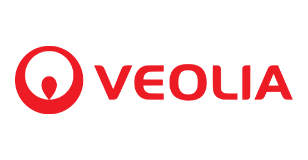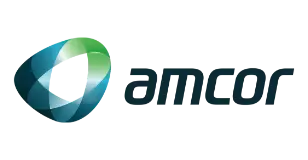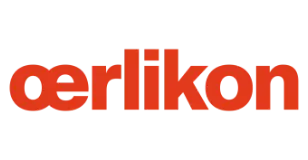
Global Neuromorphic Computing Market Research Report: Forecast (2024-2030)
By Component (Hardware, Software, Services), By Deployment (Cloud Computing, Edge Computing), By Application (Image Recognition, Signal Recognition, Data Mining, Others), By End Us...er (Consumer Electronics, IT & Telecommunication, Aerospace & Defense, Healthcare, Industrial Manufacturing, Automotive, Others), By Region (North America, South America, Europe, The Middle East & Africa, Asia-Pacific), By Company (International Business Machines Corporation, Brain Corporation, Prophesee S.A., General Vision, inc, Hewlett Packard Company, Intel Corporation, Knowm Inc, Qualcomm Technologies, Inc, Samsung Electronics Co., Ltd, Silicon Storage Technology Inc., TECHiFAB GmbH, Applied Materials, Inc., Micron Technology, SK Hynix Inc., Other) Read more
- ICT & Electronics
- Nov 2023
- Pages 187
- Report Format: PDF, Excel, PPT
Market Definition
Neuromorphic Computing is a specialized computing that utilizes structure from the human brain, i.e., neurons. It is based on the replication of neural networks, which is used in artificial environment to generate human-specific responses, including image recognition, speech recognition, data processing, etc. It leverages hardware inspired by the human brain and includes specialized chips & circuits that are generally used in devices based on artificial intelligence.
Market Insights & Analysis: Global Neuromorphic Computing Market (2024-30):
The Global Neuromorphic Computing Market is estimated to grow at a CAGR of around 81.1% during the forecast period, i.e., 2024-30. The major factor that has been driving the growth of the market is the rising demand for AI & ML technologies across various end-user industries. In line with the automation of industrial and manufacturing units across countries like India, the UAE, China, etc., companies have been largely inclining toward the integration of AI and ML software across their industrial units. To regulate & monitor large volumes of data across these industries, the demand for energy-efficient and effective integrated chips has enhanced, fueling the demand for neuromorphic computing software during the historical years.
| Report Coverage | Details |
|---|---|
| Study Period | Historical Data: 2019-22 |
| Base Year: 2023 | |
| Forecast Period: 2024-30 | |
| CAGR (2024-2030) | 81.1% |
| Regions Covered | North America: US, Canada, Mexico |
| Europe: Germany, The UK, France, Spain, Italy, Rest of Europe | |
| Asia-Pacific: China, India, Japan, South Korea, Singapore, Rest of Asia-Pacific | |
| South America: Brazil, Rest of South America | |
| Middle East & Africa: GCC, South Africa Rest of MEA | |
| Key Companies Profiled | International Business Machines Corporation, Brain Corporation, Prophesee S.A., General Vision, inc, Hewlett Packard Company, Intel Corporation, Knowm Inc, Qualcomm Technologies, Inc, Samsung Electronics Co., Ltd, Silicon Storage Technology Inc., TECHiFAB GmbH, Applied Materials, Inc., Micron Technology, SK Hynix Inc., Other |
| Unit Denominations | USD Million/Billion |
Further, in recent years, the demand for neuromorphic computing technologies has improved across the healthcare sector. This has been coming after the improved need for AI & ML software across the healthcare segments, including cardiology, neurology, etc. Moreover, artificial intelligence has been in high demand for the diagnosis and monitoring of cardiac and neural diseases, as it allows us to easily process and interpret the large volume of data coming from these diagnostic devices. Therefore, as the demand for AI and ML software would improve further across the healthcare segment, the need for better computing software like neuromorphic computing would also enhance in the forthcoming years.
Global Neuromorphic Computing Market Driver:
Rising Demand for High-performance Integrated Circuits (ICs) – The limitations of reducing the size & number of transistors on integrated circuits (ICs) have been creating the demand for new-generation and highly effective neuromorphic chips across the globe. End-user industries like consumer electronics, automotive, etc., have been observed to prefer neuromorphic chips as they offer a substantial boost in processing power, enabling more complex computations & data handling in comparison to traditional chips.
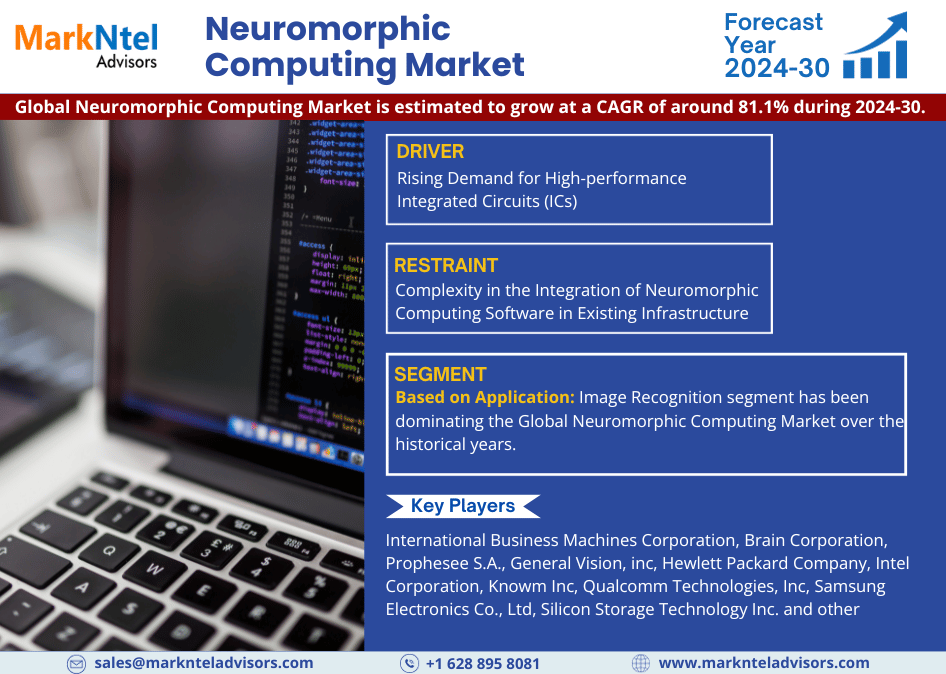
Further, the IT industry, in recent years, has started looking for computing technologies that enable self-learning capacity & require minimum manual input. This has further led market players to introduce computing chips to better processing features to the IT industry. For instance:
- In 2023, BrainChip Holdings Ltd teamed up with VVDN Technologies, a prominent electronics engineering and manufacturing firm, to introduce the industry's inaugural Edge box based on neuromorphic technology. This Edge box harnesses BrainChip's Akida™ processors, which mimic the human brain's structure & functionality.
Therefore, with the increasing requirement for high-performance ICs, especially across the IT & Telecom sectors, neuromorphic chips are projected to witness improved demand in coming years as well.
Global Neuromorphic Computing Market Opportunity:
Development of Real-time Training Algorithm for Neuromorphic Computing – The development of a real-time training algorithm for neuromorphic chips presents a significant opportunity for the growth of the Global Neuromorphic Computing Market. Researchers have been constantly focussing on the development of computing models that can learn from real-time inputs and improve their performance in data processing.
These training algorithms would be largely helpful in applications like autonomous vehicles, robotics, and AI systems in healthcare environments, where rapid decision-making & the ability to adapt to changing environments are critical. Consequently, the development of self-learning neuromorphic computing models would present significant growth in the expansion of the market in the coming years, as it is expected to enlarge the application areas of neuromorphic computing.
Global Neuromorphic Computing Market Challenge:
Complexity in the Integration of Neuromorphic Computing Software in Existing Infrastructure – The limited availability of suitable hardware & software solutions capable of running neuromorphic computing has been a substantial hindrance to the progress of algorithmic and application development for neuromorphic systems. This challenge has primarily arisen from the fact that traditional systems operating on CPUs are inadequate for supporting the functions of neuromorphic chips. To run neuromorphic computing, there is a need for updated solutions like CPUs and other emerging neuromorphic hardware systems, whose availability is limited, especially across the Middle Eastern, African, and South American regions.
Hence, the transition toward the neuromorphic computing system on a large scale has been restricted due to the unavailability of supporting hardware. Further, this transition is projected to take a significant time, as upgradation to a completely new hardware solution requires a large amount of capital investment. Therefore, the complexity of integration of neuromorphic computing software in existing infrastructure is projected to pose a challenge to the Neuromorphic Computing Market in the coming years as well.
Global Neuromorphic Computing Market Trend:
Increasing Partnerships & Collaborations Across the Industry for R&D Purposes – The growing prevalence of partnerships & collaborations among industry players and research institutes for research & development (R&D) endeavors have become a prominent trend in the Global Neuromorphic Computing Market. Research in the market has been playing a prominent role in developing advanced solutions, which has been expanding its application areas across segments like smart gadgets, healthcare, autonomous automotive, etc.
Several industry players are focussing on the R&D segment to form neuromorphic chips with a high number of integrated neural networks, which would improve its similarity with human neural networks & enhance its performance. Hence, collaborations & partnerships for research purposes have become a significant trend in the Global Neuromorphic Computing Market. Further, this trend is projected to dominate the market in the coming years as companies are consistently planning to invest in research & development to gain patents for neuromorphic computing solutions.
Global Neuromorphic Computing Market (2024-30): Segmentation Analysis
The Global Neuromorphic Computing Market study by MarkNtel Advisors evaluates & highlights the major trends and influencing factors in each segment & includes predictions for the period 2024–2030 at the global level. In accordance to the analysis, the market has been further classified as:
Based on Application:
- Image Recognition
- Signal Recognition
- Data Mining
- Others (Cognitive Computing, Neuroscience Research, etc.)
The Image Recognition segment has been dominating the Global Neuromorphic Computing Market over the historical years. This dominance has been majorly attributed to the increased preference of the end-user industry for utilizing neuromorphic computing systems to develop software required for image processing services. As this computing system draws inspiration from the human brain's neural architecture, its performance becomes exceptionally well-suited for processing visual information.
Thus, its adoption has been increasing across sectors like autonomous vehicles, drones, and mobile devices, especially across the Asia-Pacific and North American regions. Further, as companies are investing in the advancement of image sensors & other technologies required for image recognition, the segment is expected to enhance the market size in the coming years.
Based on End User:
- Consumer Electronics
- IT & Telecommunication
- Aerospace & Defense
- Healthcare
- Industrial Manufacturing
- Automotive
- Others (BFSI, Education, etc.)
Consumer Electronics accounts for the potential share of the Global Neuromorphic Computing Market. The rising inclination of consumers towards smart devices based on artificial intelligence, which performs human-like functions, has driven the demand for neuromorphic computing.
Consumers have been largely preferring devices with image & speech recognition, which do not require manual inputs. This has led to the development of consumer electronic products integrating with neuromorphic computing in recent years. Hence, with the increasing advancements required in the processing technology to offer devices that support smart homes, the need for neuromorphic computing across consumers’ electronics segment is projected to improve significantly in the coming years as well.
Global Neuromorphic Computing Market (2024-30): Regional Projection
Geographically, the Global Neuromorphic Computing Market expands across:
- North America
- South America
- Europe
- The Middle East & Africa
- Asia-Pacific
Asia-Pacific has dominated the Global Neuromorphic Computing Market during the historical years. The major factor responsible for this noteworthy growth Is the presence of leading market players across countries like China, Switzerland, etc. Further, there are also a large number of startups coming across the Asia-Pacific region that have been significantly investing in the development & successful deployment of neuromorphic chips across different end-user sectors, including consumer electronics, healthcare, etc. For instance, in 2023, SynSense, which specializes in neuromorphic computing, secured an additional USD 10 million in capital following a successful Pre-B+ financing round. The funding, led by Hong Kong-based Ausvic Capital, would facilitate the accelerated mass production of their smart vision sensor, Speck, featuring an integrated neuromorphic AI processor. Therefore, with the entry of new market players & their constantly rising investment in the advancement of the neuromorphic computing industry, the market is poised to grow in the upcoming years as well.
Global Neuromorphic Computing Industry Recent Development:
- 2023: BrainChip Holdings Ltd. teamed up with Lorser Industries Inc., a prominent system-level manufacturing & integration provider to utilize BrainChip's Akida™ technology in developing AI-powered solutions for software-defined radio (SDR) devices.
- 2022: International Business Machines Corporation scientists have introduced a breakthrough in neuromorphic computing, using "memtransistive" synapses, enabling AI hardware to mimic human-like object recognition & tackle complex mathematical problems across various applications. This advancement allows AI systems to efficiently handle tasks like recognizing dynamically changing objects, which can be challenging for traditional neural networks.
Gain a Competitive Edge with Our Global Neuromorphic Computing Market Report
- Global Neuromorphic Computing Market Report by MarkNtel Advisors provides a detailed & thorough analysis of market size & share, growth rate, competitive landscape, and key players. This comprehensive analysis helps businesses gain a holistic understanding of the market dynamics & make informed decisions.
- This report also highlights current market trends & future projections, allowing businesses to identify emerging opportunities & potential challenges. By understanding market forecasts, companies can align their strategies & stay ahead of the competition.
- Global Neuromorphic Computing Market Report aids in assessing & mitigating risks associated with entering or operating in the market. By understanding market dynamics, regulatory frameworks, and potential challenges, businesses can develop strategies to minimize risks & optimize their operations.
Frequently Asked Questions
Global Neuromorphic Computing Market Research Report (2024-2030) - Table of Contents
- Market Segmentation
- Introduction
- Product Definition
- Research Process
- Assumptions
- Executive Summary
- Global Neuromorphic Computing Market Patent Analysis
- Global Neuromorphic Computing Market Start-up Ecosystem
- Entrepreneurial Activity
- Year-on-Year Funding Received
- Funding Received by Top Companies
- Key Investors Active in the Market
- Series-wise Funding Received
- Seed Funding
- Angel Investing
- Venture Capitalist (VC) Funding
- Others
- Global Neuromorphic Computing Market Trends & Developments
- Global Neuromorphic Computing Market Dynamics
- Growth Drivers
- Challenges
- Global Neuromorphic Computing Market Regulations, Policies & Standards
- Global Neuromorphic Computing Market Hotspots & Opportunities
- Global Neuromorphic Computing Market Outlook, 2019-2030F
- Market Size & Analysis
- By Revenues (USD Million)
- Market Share & Analysis
- By Component
- Hardware- Market Size & Forecast 2019-2030, USD Million
- Processor- Market Size & Forecast 2019-2030, USD Million
- Memory Modules- Market Size & Forecast 2019-2030, USD Million
- Software- Market Size & Forecast 2019-2030, USD Million
- Services- Market Size & Forecast 2019-2030, USD Million
- Hardware- Market Size & Forecast 2019-2030, USD Million
- By Deployment
- Cloud Computing- Market Size & Forecast 2019-2030, USD Million
- Edge Computing- Market Size & Forecast 2019-2030, USD Million
- By Application
- Image Recognition- Market Size & Forecast 2019-2030, USD Million
- Signal Recognition- Market Size & Forecast 2019-2030, USD Million
- Data Mining- Market Size & Forecast 2019-2030, USD Million
- Others (Cognitive Computing, Neuroscience Research, etc.) - Market Size & Forecast 2019-2030, USD Million
- By End User
- Consumer Electronics- Market Size & Forecast 2019-2030, USD Million
- IT & Telecommunication- Market Size & Forecast 2019-2030, USD Million
- Aerospace & Defense- Market Size & Forecast 2019-2030, USD Million
- Healthcare- Market Size & Forecast 2019-2030, USD Million
- Industrial Manufacturing- Market Size & Forecast 2019-2030, USD Million
- Automotive- Market Size & Forecast 2019-2030, USD Million
- Others (BFSI, Education, etc.) - Market Size & Forecast 2019-2030, USD Million
- By Region
- North America
- South America
- Europe
- The Middle East & Africa
- Asia-Pacific
- By Company
- Competition Characteristics
- Revenue Shares & Analysis
- By Component
- Market Size & Analysis
- North America Neuromorphic Computing Market Outlook, 2019-2030F
- Market Size & Analysis
- By Revenues (USD Million)
- Market Share & Analysis
- By Component- Market Size & Forecast 2019-2030, USD Million
- By Deployment- Market Size & Forecast 2019-2030, USD Million
- By Application- Market Size & Forecast 2019-2030, USD Million
- By End User- Market Size & Forecast 2019-2030, USD Million
- By Country
- The US
- Canada
- Mexico
- The US Neuromorphic Computing Market Outlook, 2019-2030F
- Market Size & Analysis
- By Revenues (USD Million)
- Market Share & Analysis
- By Component- Market Size & Forecast 2019-2030, USD Million
- By End User- Market Size & Forecast 2019-2030, USD Million
- Market Size & Analysis
- Canada Neuromorphic Computing Market Outlook, 2019-2030F
- Market Size & Analysis
- By Revenues (USD Million)
- Market Share & Analysis
- By Component- Market Size & Forecast 2019-2030, USD Million
- By End User- Market Size & Forecast 2019-2030, USD Million
- Market Size & Analysis
- Mexico Neuromorphic Computing Market Outlook, 2019-2030F
- Market Size & Analysis
- By Revenues (USD Million)
- Market Share & Analysis
- By Component- Market Size & Forecast 2019-2030, USD Million
- By End User- Market Size & Forecast 2019-2030, USD Million
- Market Size & Analysis
- Market Size & Analysis
- South America Neuromorphic Computing Market Outlook, 2019-2030F
- Market Size & Analysis
- By Revenues (USD Million)
- Market Share & Analysis
- By Component- Market Size & Forecast 2019-2030, USD Million
- By Deployment- Market Size & Forecast 2019-2030, USD Million
- By Application- Market Size & Forecast 2019-2030, USD Million
- By End User- Market Size & Forecast 2019-2030, USD Million
- By Country
- Brazil
- Rest of South America
- Brazil Neuromorphic Computing Market Outlook, 2019-2030F
- Market Size & Analysis
- By Revenues (USD Million)
- Market Share & Analysis
- By Component- Market Size & Forecast 2019-2030, USD Million
- By End User- Market Size & Forecast 2019-2030, USD Million
- Market Size & Analysis
- Market Size & Analysis
- Europe Neuromorphic Computing Market Outlook, 2019-2030F
- Market Size & Analysis
- By Revenues (USD Million)
- Market Share & Analysis
- By Component- Market Size & Forecast 2019-2030, USD Million
- By Deployment- Market Size & Forecast 2019-2030, USD Million
- By Application- Market Size & Forecast 2019-2030, USD Million
- By End User- Market Size & Forecast 2019-2030, USD Million
- By Country
- Germany
- The UK
- France
- Italy
- Spain
- Rest of Europe
- Germany Neuromorphic Computing Market Outlook, 2019-2030F
- Market Size & Analysis
- By Revenues (USD Million)
- Market Share & Analysis
- By Component- Market Size & Forecast 2019-2030, USD Million
- By End User- Market Size & Forecast 2019-2030, USD Million
- Market Size & Analysis
- The UK Neuromorphic Computing Market Outlook, 2019-2030F
- Market Size & Analysis
- By Revenues (USD Million)
- Market Share & Analysis
- By Component- Market Size & Forecast 2019-2030, USD Million
- By End User- Market Size & Forecast 2019-2030, USD Million
- Market Size & Analysis
- France Neuromorphic Computing Market Outlook, 2019-2030F
- Market Size & Analysis
- By Revenues (USD Million)
- Market Share & Analysis
- By Component- Market Size & Forecast 2019-2030, USD Million
- By End User - Market Size & Forecast 2019-2030, USD Million
- Market Size & Analysis
- Italy Neuromorphic Computing Market Outlook, 2019-2030F
- Market Size & Analysis
- By Revenues (USD Million)
- Market Share & Analysis
- By Component- Market Size & Forecast 2019-2030, USD Million
- By End User - Market Size & Forecast 2019-2030, USD Million
- Market Size & Analysis
- Spain Neuromorphic Computing Market Outlook, 2019-2030F
- Market Size & Analysis
- By Revenues (USD Million)
- Market Share & Analysis
- By Component- Market Size & Forecast 2019-2030, USD Million
- By End User- Market Size & Forecast 2019-2030, USD Million
- Market Size & Analysis
- Market Size & Analysis
- Middle East & Africa Neuromorphic Computing Market Outlook, 2019-2030F
- Market Size & Analysis
- By Revenues (USD Million)
- Market Share & Analysis
- By Component- Market Size & Forecast 2019-2030, USD Million
- By Deployment- Market Size & Forecast 2019-2030, USD Million
- By Application- Market Size & Forecast 2019-2030, USD Million
- By End User- Market Size & Forecast 2019-2030, USD Million
- By Country
- GCC
- South Africa
- Rest of MEA
- GCC Neuromorphic Computing Market Outlook, 2019-2030F
- Market Size & Analysis
- By Revenues (USD Million)
- Market Share & Analysis
- By Component- Market Size & Forecast 2019-2030, USD Million
- By End User- Market Size & Forecast 2019-2030, USD Million
- Market Size & Analysis
- South Africa Neuromorphic Computing Market Outlook, 2019-2030F
- Market Size & Analysis
- By Revenues (USD Million)
- Market Share & Analysis
- By Component- Market Size & Forecast 2019-2030, USD Million
- By End User- Market Size & Forecast 2019-2030, USD Million
- Market Size & Analysis
- Market Size & Analysis
- Asia-Pacific Neuromorphic Computing Market Outlook, 2019-2030F
- Market Size & Analysis
- By Revenues (USD Million)
- Market Share & Analysis
- By Component- Market Size & Forecast 2019-2030, USD Million
- By Deployment- Market Size & Forecast 2019-2030, USD Million
- By Application- Market Size & Forecast 2019-2030, USD Million
- By End User- Market Size & Forecast 2019-2030, USD Million
- By Country
- China
- India
- Japan
- South Korea
- Singapore
- Rest of Asia-Pacific
- China Neuromorphic Computing Market Outlook, 2019-2030F
- Market Size & Analysis
- By Revenues (USD Million)
- Market Share & Analysis
- By Component- Market Size & Forecast 2019-2030, USD Million
- By End User- Market Size & Forecast 2019-2030, USD Million
- Market Size & Analysis
- India Neuromorphic Computing Market Outlook, 2019-2030F
- Market Size & Analysis
- By Revenues (USD Million)
- Market Share & Analysis
- By Component- Market Size & Forecast 2019-2030, USD Million
- By End User - Market Size & Forecast 2019-2030, USD Million
- Market Size & Analysis
- Japan Neuromorphic Computing Market Outlook, 2019-2030F
- Market Size & Analysis
- By Revenues (USD Million)
- Market Share & Analysis
- By Component- Market Size & Forecast 2019-2030, USD Million
- By End User - Market Size & Forecast 2019-2030, USD Million
- Market Size & Analysis
- South Korea Neuromorphic Computing Market Outlook, 2019-2030F
- Market Size & Analysis
- By Revenues (USD Million)
- Market Share & Analysis
- By Component- Market Size & Forecast 2019-2030, USD Million
- By End User- Market Size & Forecast 2019-2030, USD Million
- Market Size & Analysis
- Singapore Neuromorphic Computing Market Outlook, 2019-2030F
- Market Size & Analysis
- By Revenues (USD Million)
- Market Share & Analysis
- By Component- Market Size & Forecast 2019-2030, USD Million
- By End User- Market Size & Forecast 2019-2030, USD Million
- Market Size & Analysis
- Market Size & Analysis
- Global Neuromorphic Computing Market Key Strategic Imperatives for Success & Growth
- Competition Outlook
- Company Profiles
- International Business Machines Corporation
- Business Description
- Technology Portfolio
- Strategic Alliances or Partnerships
- Recent Developments
- Financial Details
- Others
- Brain Corporation
- Business Description
- Technology Portfolio
- Strategic Alliances or Partnerships
- Recent Developments
- Financial Details
- Others
- Prophesee S.A.
- Business Description
- Technology Portfolio
- Strategic Alliances or Partnerships
- Recent Developments
- Financial Details
- Others
- General Vision, inc
- Business Description
- Technology Portfolio
- Strategic Alliances or Partnerships
- Recent Developments
- Financial Details
- Others
- Hewlett Packard Company
- Business Description
- Technology Portfolio
- Strategic Alliances or Partnerships
- Recent Developments
- Financial Details
- Others
- Intel Corporation
- Business Description
- Technology Portfolio
- Strategic Alliances or Partnerships
- Recent Developments
- Financial Details
- Others
- Knowm Inc
- Business Description
- Technology Portfolio
- Strategic Alliances or Partnerships
- Recent Developments
- Financial Details
- Others
- Qualcomm Technologies, Inc
- Business Description
- Technology Portfolio
- Strategic Alliances or Partnerships
- Recent Developments
- Financial Details
- Others
- Samsung Electronics Co., Ltd
- Business Description
- Technology Portfolio
- Strategic Alliances or Partnerships
- Recent Developments
- Financial Details
- Others
- Silicon Storage Technology Inc.
- Business Description
- Technology Portfolio
- Strategic Alliances or Partnerships
- Recent Developments
- Financial Details
- Others
- TECHiFAB GmbH
- Business Description
- Technology Portfolio
- Strategic Alliances or Partnerships
- Recent Developments
- Financial Details
- Others
- Applied Materials, Inc.
- Business Description
- Technology Portfolio
- Strategic Alliances or Partnerships
- Recent Developments
- Financial Details
- Others
- Micron Technology
- Business Description
- Technology Portfolio
- Strategic Alliances or Partnerships
- Recent Developments
- Financial Details
- Others
- SK Hynix Inc.
- Business Description
- Technology Portfolio
- Strategic Alliances or Partnerships
- Recent Developments
- Financial Details
- Others
- Others
- International Business Machines Corporation
- Company Profiles
- Disclaimer
MarkNtel Advisors follows a robust and iterative research methodology designed to ensure maximum accuracy and minimize deviation in market estimates and forecasts. Our approach combines both bottom-up and top-down techniques to effectively segment and quantify various aspects of the market. A consistent feature across all our research reports is data triangulation, which examines the market from three distinct perspectives to validate findings. Key components of our research process include:
1. Scope & Research Design At the outset, MarkNtel Advisors define the research objectives and formulate pertinent questions. This phase involves determining the type of research—qualitative or quantitative—and designing a methodology that outlines data collection methods, target demographics, and analytical tools. They also establish timelines and budgets to ensure the research aligns with client goals.
2. Sample Selection and Data Collection In this stage, the firm identifies the target audience and determines the appropriate sample size to ensure representativeness. They employ various sampling methods, such as random or stratified sampling, based on the research objectives. Data collection is carried out using tools like surveys, interviews, and observations, ensuring the gathered data is reliable and relevant.
3. Data Analysis and Validation Once data is collected, MarkNtel Advisors undertake a rigorous analysis process. This includes cleaning the data to remove inconsistencies, employing statistical software for quantitative analysis, and thematic analysis for qualitative data. Validation steps are taken to ensure the accuracy and reliability of the findings, minimizing biases and errors.
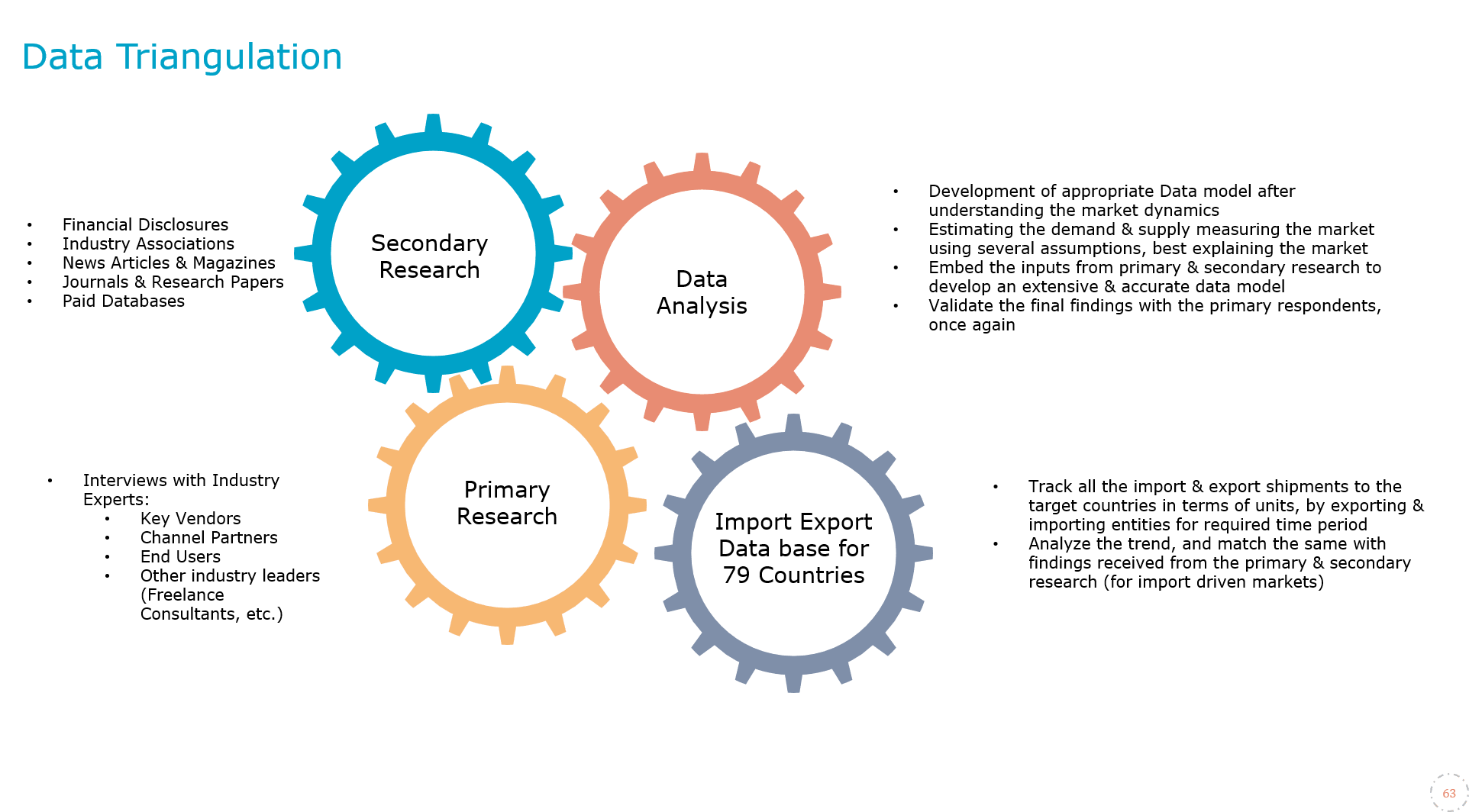
4. Data Forecast and FinalizationThe final phase involves forecasting future market trends based on the analyzed data. MarkNtel Advisors utilize predictive modeling and time series analysis to anticipate market behaviors. The insights are then compiled into comprehensive reports, featuring visual aids like charts and graphs, and include strategic recommendations to inform client decision-making

